- Register
- Log in to Tune-In
- Wishlist (0)
-
Shopping cart
(0)
You have no items in your shopping cart.
Beatles News
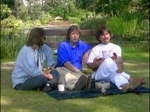
Rock music's greatest divorce, the breakup of the Beatles in 1970, was always associated with the film and album "Let it Be." Half a century later, dozens of hours of that film left on the cutting room floor is telling a different story. 60 Minutes will show some of that footage Sunday night for the first time, revealing an intimacy and creative bond between the four musicians that belies the long-held narrative.
Jon Wertheim speaks to director Peter Jackson, whose documentary series, "Get Back," resurrects the unused footage to rewrite the story of rock's biggest breakup, on the next edition of 60 Minutes Sunday, November 14, at 7:30 p.m. ET and 7 p.m. PT on CBS.
Peter Jackson, best known for his work on "The Lord of the Rings" films, has been working on his series for four years. He was surprised when he first viewed the nearly 60 hours of material that had been sitting in a vault.
Source: cbsnews.com
details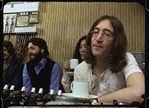
The director’s three-part documentary “Get Back” explores the most contested period in the band’s history and reveals there’s still plenty to debate.
It is a cold January morning in 1969, and three of the four Beatles are assembled in a cavernous film studio in London, with cameras rolling and microphones everywhere. “Lennon’s late again,” Paul McCartney says matter of factly, as he plugs in his bass guitar.
With Ringo Starr and George Harrison sitting groggily before him, a tray of toast and jam by their side, McCartney starts to strum and sing, searching for inspiration. Within minutes, a mid-tempo groove takes shape and a familiar vocal melody emerges. “Get back,” he sings in a faint howl. “Get back to where you once belonged.” Almost like magic, a Beatles classic begins to form out of nothing.
Source: Ben Sisario/nytimes.com
details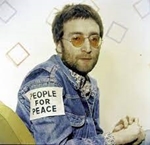
The Beatles were fans of many Elvis Presley songs. Despite this, most of them said they didn’t like one of Elvis’ songs on television. Notably, John Lennon made a prediction about the song that came true.
According to the book Careless Love: The Unmaking of Elvis Presley, the King of Rock ‘n’ Roll’s label, RCA Victor, wanted him to record new songs in June 1961. Around the time, Elvis wanted a recording studio built in his home. The label wasn’t willing to give him the money to build a home studio.
Because of this, Elvis went to a studio in Nashville to record tunes. He cut five songs during the session. Two of these tracks — “Little Sister” and “(Marie’s the Name) His Latest Flame” — are some of Elvis’ most famous songs from the period. Another song from the session was famously critiqued by The Beatles.
Source: cheatsheet.com

A lost, never-before-heard psychedelic pop song featuring George Harrison and Ringo Starr has been unearthed in a Birmingham loft.
Radhe Shaam was written and produced by broadcaster and journalist Suresh Joshi in 1968 for a documentary film, East Meets West. The recording took place at Trident Studios in London, where Harrison and Starr were recording Hey Jude with the Beatles and offered to contribute guitar and drum work to the song.
Beginning with a pealing riff from Harrison and underpinned by a steady backbeat from Starr, the song features Hindi-language vocals by singer Aashish Khan, but gives plenty of space for both Beatles to add highly distinctive playing. Harrison delivers a long, searching and joyous guitar solo, while Starr adds his characteristic drum rolls and fills.
Source: Ben Beaumont-Thomas/Ben Beaumont-Thomas
details
Sir Paul McCartney took the stage at the Royal Festival Hall in London on Friday, November 8, to discuss his new quasi-memoir, The Lyrics: 1956 to the Present—touching on everything from his relationship with John Lennon, his thoughts on a new Beatles museum in Liverpool, his distaste for passport photos and more, the night was another gem of new reflections from the now-79-year-old former-Beatle.
“In those days you were allowed to look groovy in passport photos,” the “Let It Be” writer said as he unveiled a never-before-seen photo of himself from the late ‘50s. “But now you’ve got to look into the camera and not smile—because it’s a totalitarian state!”
At another point in the evening, McCartney humorously reflected on the health of the only other living Beatle, Sir Ringo Starr, with a comment that would’ve lit the Paul Is Dead community ablaze with speculation back in its psychedelic heyday.
“John and I went to grammar schools—Ringo, unfortunately, didn’t, but only because he was seriously ill when he was a kid,” McCartney said. “His mother was told he wouldn’t live—but Ringo will outlive u details

1. Was “Let It Be” Created to Mark the Beatles’ Breakup?
Arrived in stores in May 8 1970. “Let It Be” was the thirteenth and final album released by the British band. At the time, John Lennon and Paul McCartney were not part of the Beatles. However, this disc is not obsessed with the end, as it is It wasn’t the last thing that was recorded. Recording for this album began in January 1969, before the band recorded “Abbey Road”—the twelfth studio album that was to be released on September 26, 1969.
However, the “Let It Be” disc includes some files The band’s last momentsWith no signs of a rupture between the singers. One of them is the Beatles’ last public performance: On January 30, 1969, the band performed a Small concert on the rooftop of Apple Recording Studios, in Savile Row, London, which appears in the accompanying behind-the-scenes documentary “Let It Be”. Three of the seven songs recorded at this concert are part of the last album. The police had to ask the Beatles to stop the show due to the riots in the streets.
Source: Shirley Farmer/brytfmonline.com
details
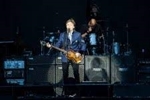
Sir Paul McCartney hates the misconception that he broke up The Beatles.
McCartney says he has “only finally just got over” claims that he split up the band – which also featured John Lennon, Sir Ringo Starr and George Harrison – in 1969.
During a talk with poet Paul Muldoon – who he has collaborated on ‘The Lyrics, 1956 to the present’ book with – at the Royal Festival Hall in London, McCartney was asked what the biggest misconception was about being Paul McCartney.
He replied: “That I had broken The Beatles up … so I lived with that because once a headline is out there it sticks. That was a big one that I’ve only finally just got over.”
Paul also revealed his regret that he never told John Lennon he loved him and said it was “miraculous” that The Beatles had found each other.
Source: Paul Cashmere/noise11.com

Paul McCartney has admitted he holds The Everly Brothers in higher esteem than his own band The Beatles.
The singer, 79, made the shocking remark in his latest book The Lyrics - while adding that the John Lennon had been heavily influenced by the late two-piece as well.
He wrote: 'The biggest influence on John and Me was The Everly Brothers. To this day, I just think they're the greatest. And they were different.
'You'd heard barbershop quartets, you'd heard the Beverley Sisters - three girls - you'd all heard that.
'But just two guys, two good-looking guys? So we idolised them. We wanted to be them,' the Hey Jude hitmaker concluded.
The Everly Brothers - consisting of Phil and Don - hold the record for the most top 100 singles by any duo in history.
Source: Callum Wells/dailymail.co.uk
details

Last night while checking out some music I found a few fascinating choices, including another version of the so-called rooftop concert by The Beatles. This version was slightly blurry, but I watched it anyway.
Video of that rooftop performance has been around for years, since a portion of it had been included in the original "Let It Be" movie — but it didn't include all the songs The Beatles played that day.
Beatles fans are hoping for more when the upcoming Peter Jackson film "Get Back" is released exclusively on Disney+, also called Disney Plus, on Nov. 25, 26 and 27. With three segments of two hours each planned, there's plenty of time to air the whole thing. That would be great because The Beatles rooftop concert marked the last time all four Beatles played in-concert together. Previously, their last performance had been before a stadium-full of fans in 1966, at San Francisco's Candlestick Park.
Source: James Beaty/mcalesternews.com
details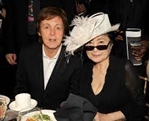
Yoko Ono has divided Beatles fans ever since the band broke up. Fans often blamed John Lennon’s girlfriend and ultimately wife for the band’s break-up. Whether that’s true or not, Yoko became a common joke for lovers who come between band members. In a recent interview, Paul McCartney revealed he was conflicted on Lennon’s girlfriend too. His opinion ultimately came around to the positive side.McCartney was a guest on the Fresh Air podcast on Nov. 3. Talking to host Terry Gross about his book, Paul McCartney: The Lyrics, and the upcoming documentary The Beatles: Get Back, McCartney went there about Ono. Paul McCartney: The Lyrics is out now and The Beatles: Get Back premieres Nov. 25 on Disney+.
Source: cheatsheet.com
details
Paul McCartney has spoken about how he “never told John Lennon that he loved him”, but that he now finds it “great” to realise just how much his former Beatle bandmate meant to him.
Speaking at an event on Friday night (November 5) to launch his new book The Lyrics at Southbank Centre’s Royal Festival Hall, the poet Paul Muldoon noted that one thing that came across strongly in the new book was Macca’s “love” for his late friend.
“It’s true. You say that I loved him, but as 16-year-old and 17-year-old Liverpool kids, you couldn’t say that – it just wasn’t done,” said McCartney. “So I never did. I never really said, ‘You know, I love you man’. I never really got round to it. So now, it is great to just realise how much I love this man.”
Source: Andrew Trendell/nme.com
details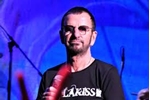
Michael Lindsay-Hogg, the director of The Beatles‘ Let It Be film, has said he “doesn’t care” that Ringo Starr isn’t a fan of the documentary.
Released in 1970, the project captured the Fab Four during recording sessions for their 12th studio album – also titled ‘Let It Be’ – and drew particular attention to heated exchanges between Paul McCartney and George Harrison.
Fifty-five hours of unseen footage from the Let It Be shoot – as well as 140 hours of audio – was repurposed by Peter Jackson for his forthcoming The Beatles: Get Back documentary, which arrives in the UK on November 25 via Disney+.
During a new interview with Rolling Stone, Lindsay-Hogg responded to Starr’s admission that he “didn’t feel any joy in the original” film. The drummer described the project as “miserable” and criticised it for focusing “on one moment between two of the lads [McCartney and Harrison]”.
Source: Tom Skinner/nme.com
details
There were many times when George Harrison wanted to quit The Beatles. Touring took a toll on his mental health, and he wished he could escape from aspects of fame, but he bided his time. The only thing that helped George’s soul was his newfound spirituality and writing new music, which he stockpiled away. However, after a while, he realized that “Beatle George” wasn’t him anymore; it wasn’t even real. If you look back at old interviews of George and see that he’s relatively happy, you could just be looking at “Beatle George,” not the real George. When he would get sick of being famous or a Beatle, he’d turn into his alter-ego, “Beatle George,” so no one could tell he was unhappy.
Source: cheatsheet.com
details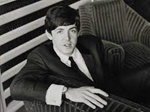
The forthcoming documentary Get Back revisits The Beatles' final days together. McCartney says he took the band's breakup hard: "It was quite difficult, because I didn't know what to do at all."
This is FRESH AIR. I'm Terry Gross. It is my great pleasure to say that my guest is Paul McCartney, and we're going to talk about his life and music through two new projects. He has a new two-volume set of books called "The Lyrics," collecting his lyrics and the stories behind them, starting with songs he wrote before the Beatles and ending with songs from his latest album, "McCartney III," which was released late last year.
There's also the new documentary "Get Back," which is about the three weeks the Beatles spent in 1969 writing, rehearsing and recording the songs on their album "Let It Be" and giving their final performance together on a rooftop in London's Savile Row. The band broke up before the album "Let It Be" was released in 1970. This documentary draws on footage that was not used in the 1969 film "Let It Be" that documented the same sessions. "Get Back" will premiere in three two-hour installments over Thanksgiving weekend on Disney+.
Source: Terry Gross/gpb.org

The Beatles, as they were quick to point out, in many ways resembled a family. Sure, there was a lot of love. But like all families, they could fight with the best of 'em. This was especially true in the aftermath of their split in the spring of 1970. Though they'd quietly agreed to go their separate ways the prior fall, it wasn't until the news went public that April that the mudslinging truly began.
Now, in his new book Lyrics: 1956 to the Present, Sir Paul McCartney is opening up about that troubled time in his relationship with John Lennon, his friend and musical soulmate. "When we broke up and everyone was now flailing around, John turned nasty," McCartney, 79, writes. "I don't really understand why. Maybe because we grew up in Liverpool, where it was always good to get in the first punch of a fight." Thankfully, he was able to make peace with Lennon before his tragic murder on Dec. 8, 1980.
Source: Jordan Runtagh/people.com
details